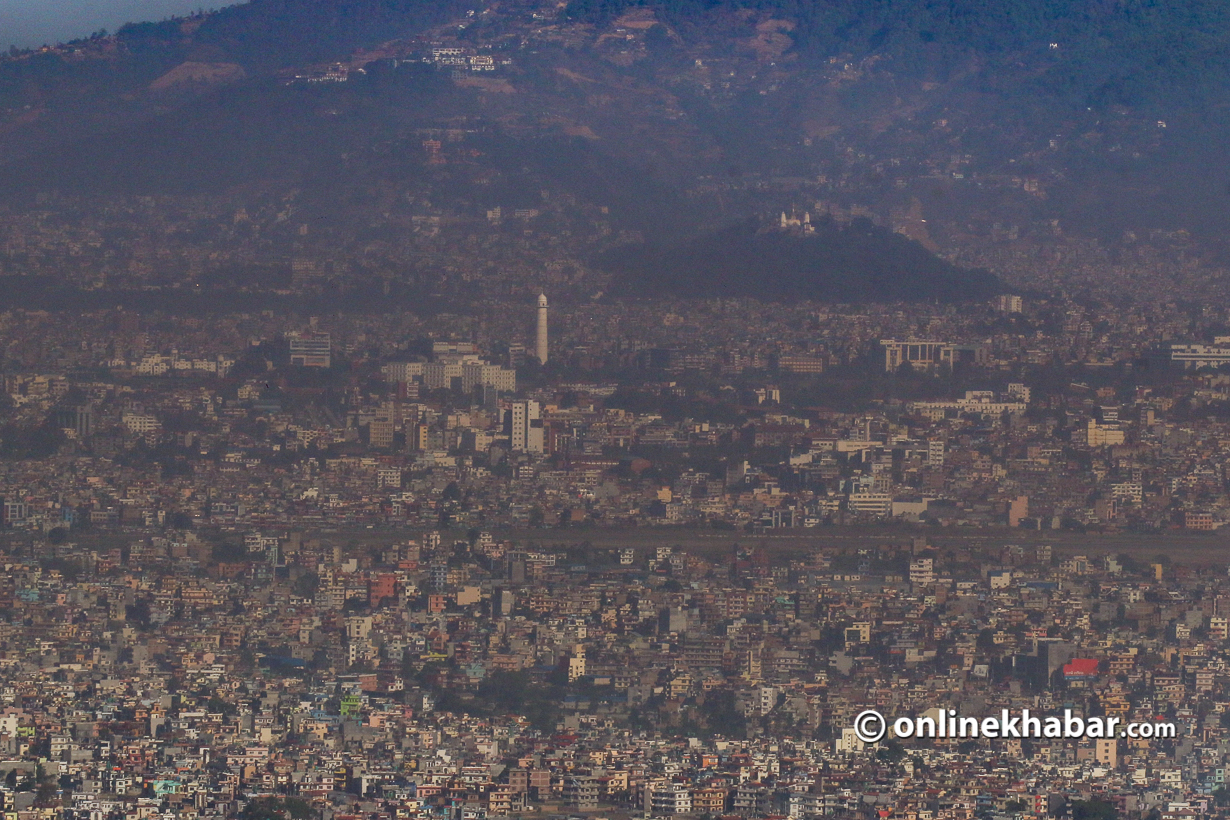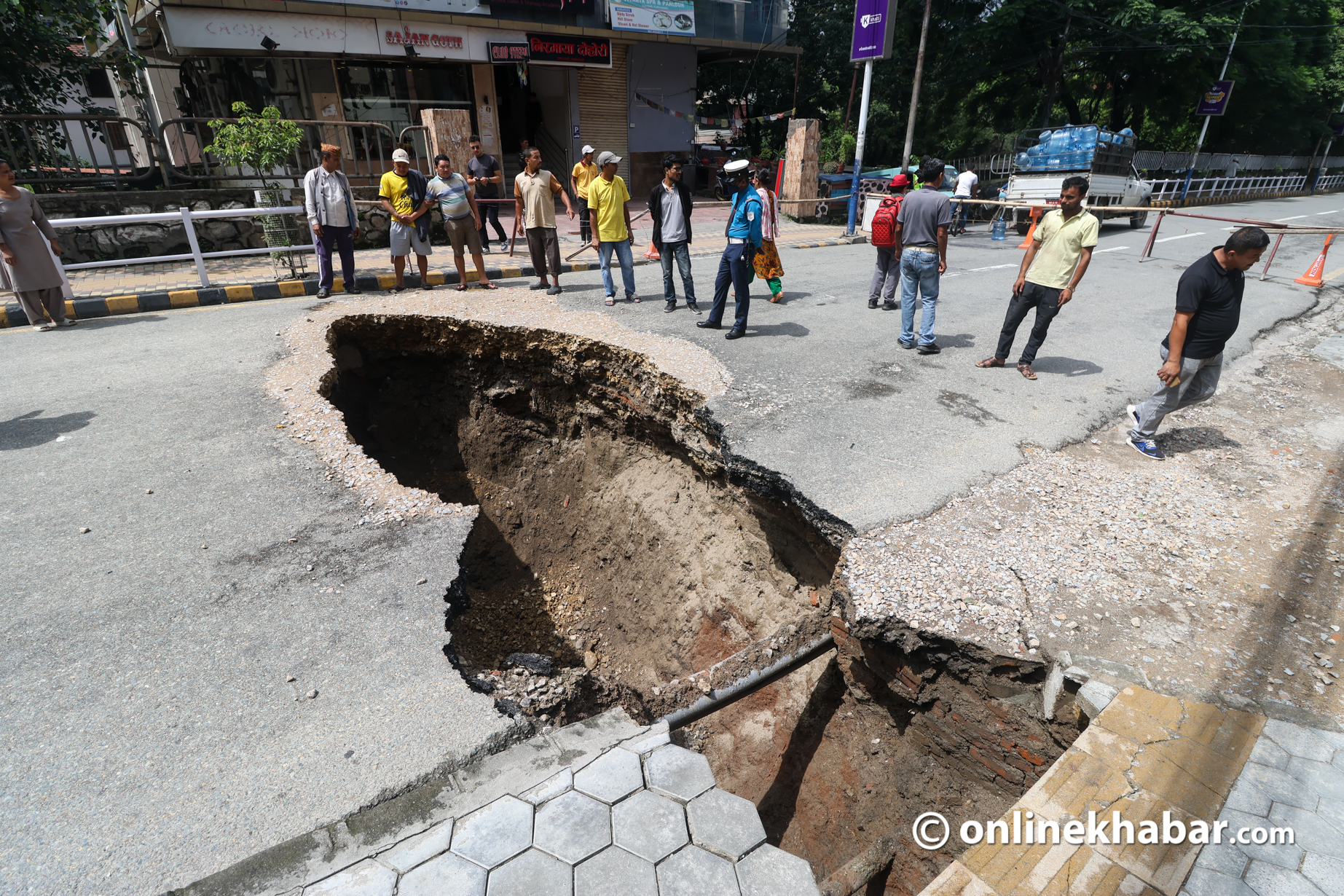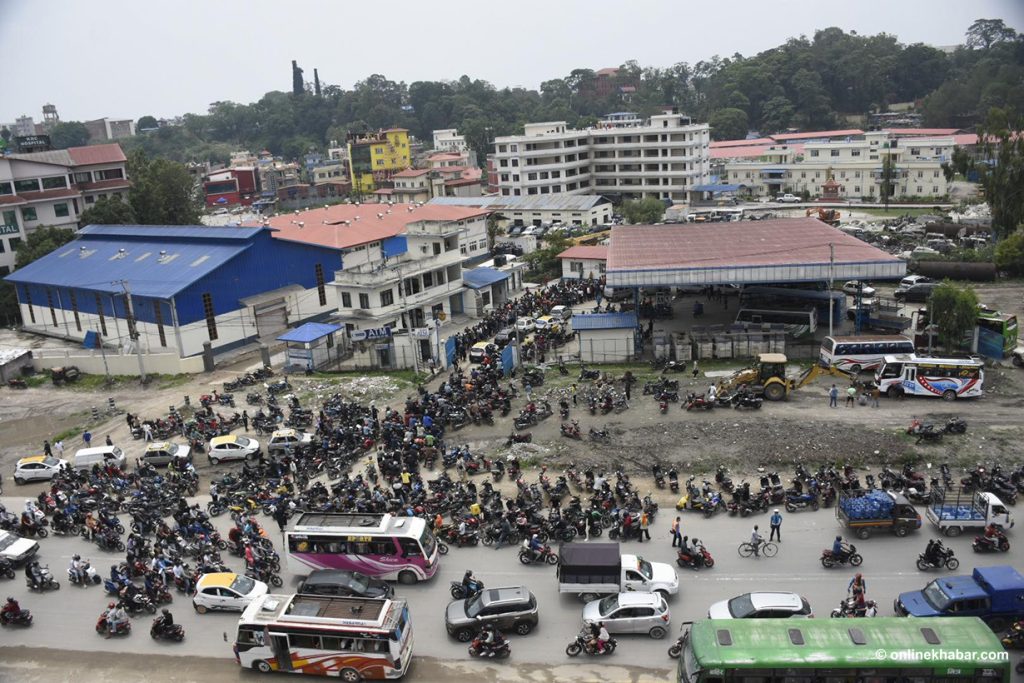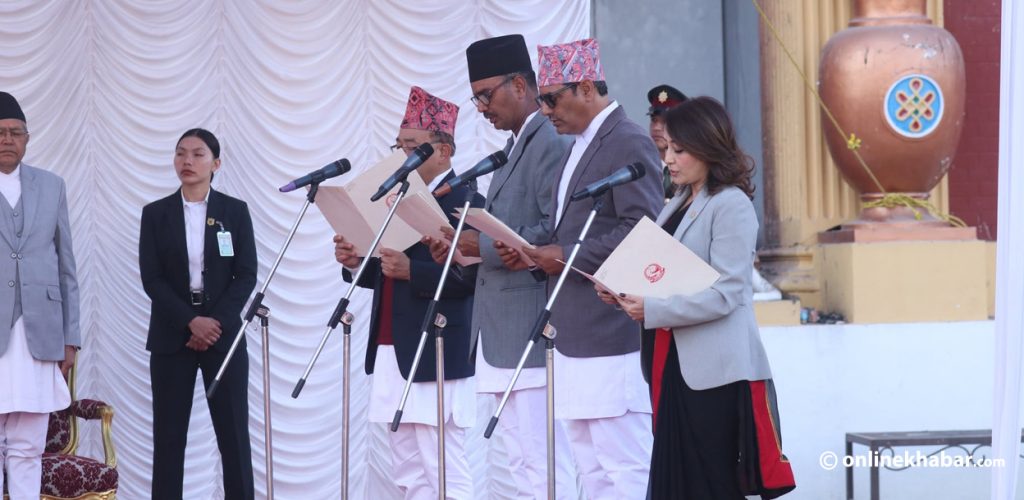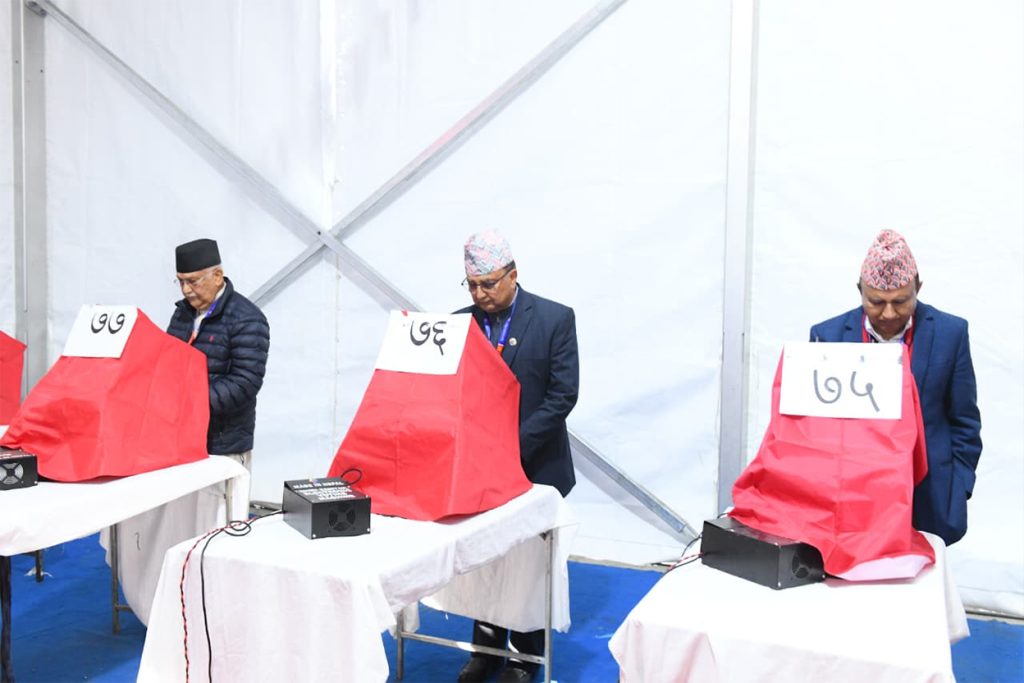Nani Maiya Maharjan, an 80-year-old woman of Jhonchhe, Kathmandu, spent the first 50 years of her life in house made of wood, mud, stones and bricks. Around 30 years ago, her son built a new concrete house.
That shift from her old house to the new one has Maharjan realise many other changes she witnessed in her life. One of them was that number of the concrete buildings like her new residence was increasing around her. Consequently, it destroyed the paddy field in the area. She finds this quite surprising.
“The old house those days would feel warm in the winters and cool in the summers. I didn’t hear by parents that they were sick even in an old age,” she says, “But, perhaps I live in this cement house, my hands and feet swell, back aches, and skin itches.”
Although no study about the impact of concrete houses on human health in Nepal was found, an article in The Guardian published in 2019 has confirmed Maharjan’s suspicion about the cause of her problems.
Migration to the Kathmandu valley from various parts of the country increased uncontrollably after the civil war (1996 to 2006) and the 2015 earthquake. In order to accommodate those growing populations, thousands of new concrete houses have been built. Consequently, old-styled traditional houses are disappearing.
This has created a lot of negative impacts on human health, environment and contributed to global warming, according to engineers and other experts.
Uncontrolled urbanisation
According to the data provided by the Department of Urban Development and Building Construction, there are 69 completed and under-construction apartments for housing in the Kathmandu valley alone.
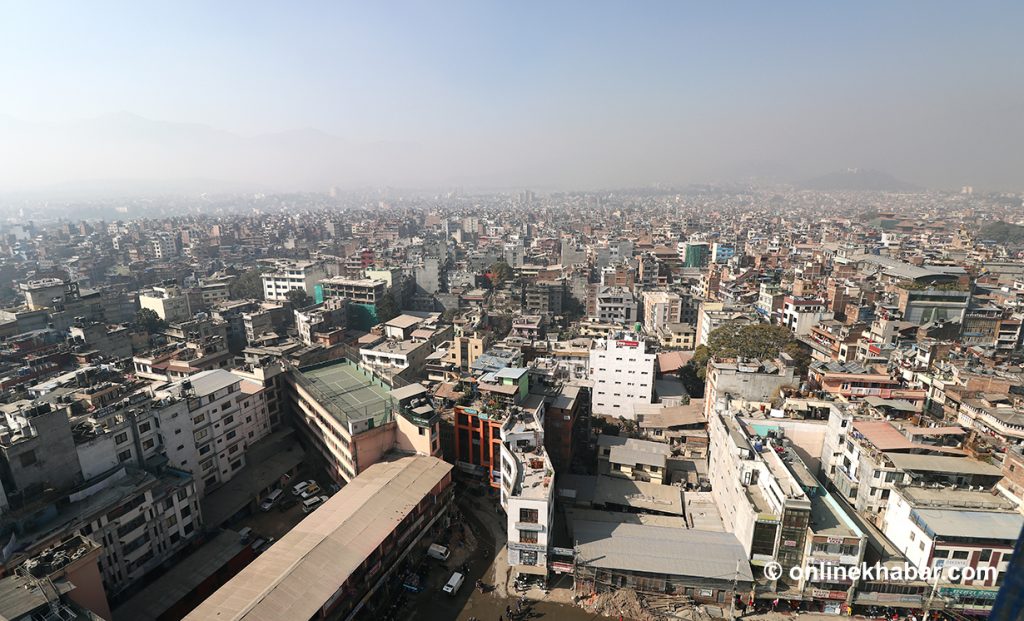
The number of houses built within the 50-square km area of the Kathmandu metropolitan city from the late 1990s until the last fiscal is 70,090, which is seven times more than the area’s capacity, says Suraj Shakya, the chief architect of the Building Construction Permit Division of the local government. Most of them are houses made of modern building materials including cement and concrete.
After the implementation of the building code in 1993/94, the number of people building concrete houses in Kathmandu skyrocketed. However, there has been a slight decline in it in the past two years apparently due to the lack of space.
Yet, Nepal still has a lot of potentials to produce cement, the main component of concrete, according to Dhruva Thapa, the president of the Cement Manufacturers’ Association, Nepal. As the amount of cement production is growing, the production rate of modern construction materials including rods, poles, and steel is also increasing at the same rate.
Although studies on the quality of these construction materials have been carried out by various government departments time and again, studies on the impact of these materials on the environment, global warming, and human health are found to be minimal.
Impact on temperature
Besides health, do concrete houses have an impact on temperature also?
Nani Maiya Maharjan is an answer as she says she did not need air conditioning or a heater in summers and winters respectively while living in the old house.
According to a 2014 study conducted by the Tribhuvan University Institute of Engineering (IOE) Professor Sushil Bajracharya, The Thermal Performance of Traditional Residential Buildings in Kathmandu Valley in 2014, there is a difference of around 2 degrees Celsius between the temperatures of traditional buildings of the Kathmandu valley (made of bricks, wood, stone, and clay) and houses made of modern construction materials including cement, steel, rods, and poles. It means the valley is getting hotter as the number of concrete buildings is increasing.
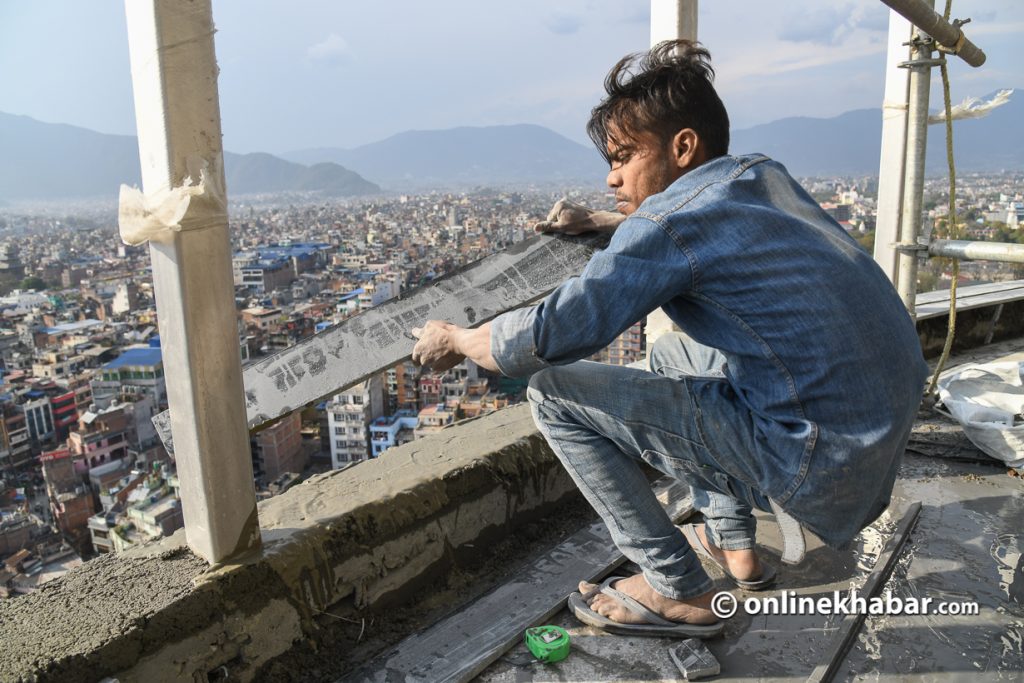
In winters, in a traditional house, the indoor temperature is one to two degrees Celsius higher than outside, and in summers, it is one to two degrees Celsius cooler than outside. But, the temperatures of concrete houses are exactly the opposite.
It is because the bricks, cement, rods, steel, marble, and other human-made construction materials contain 40 per cent of the carbon-emitting materials. Embodied energy (energy contained in building materials) is consumed while producing these materials. The more embodied energy it takes to produce the material, the more carbon it emits, as per Bajracharya.
Likewise, a study released by the British think tank Chatham House in June 2018 concluded that 8 per cent of carbon dioxide is emitted from cement.
Ignorant authorities
The Ministry of Urban Development is the supreme authority to plan cities of Nepal. However, the ministry does not seem to have been seriously considerate about reducing the production and use of cement products and finding alternatives to it.
For instance, the government of Nepal has signed the Paris Agreement 2016, which aims to reduce global warming to 1.5 degree Celsius per year. Despite the government’s commitment, the temperature in the valley is currently rising by 2 degrees Celsius.
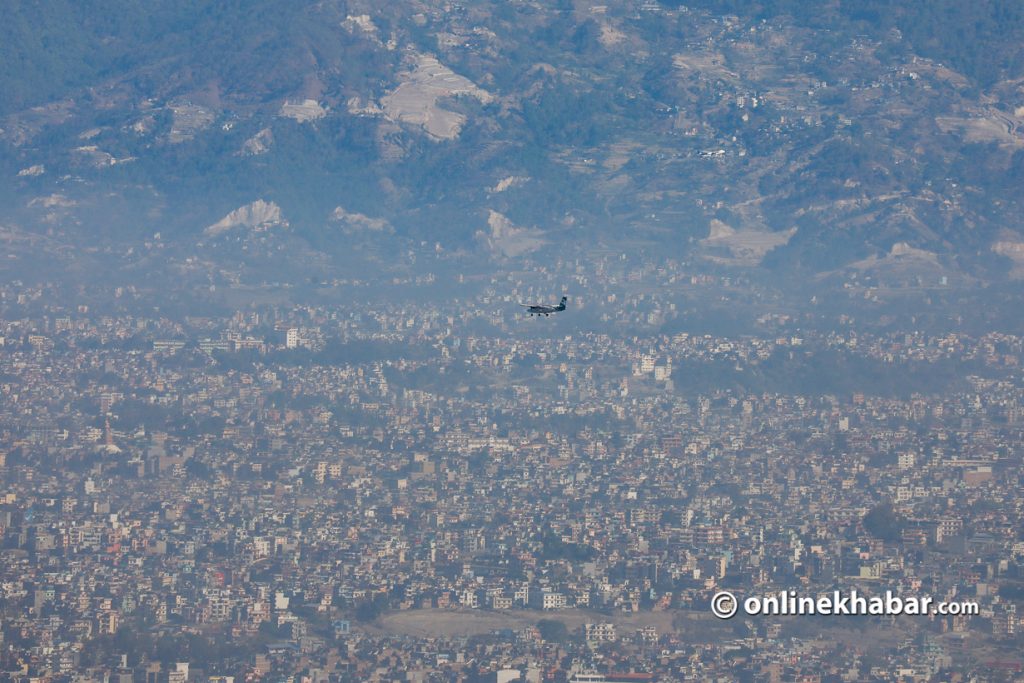
Similarly, as per Nepal’s international commitment, the Department of Environment has developed the framework of the National Adaptation Programme of Action (NAPA) and Local Adaptation Plan of Action (LAPA). The LAPA should be followed when implementing urban planning to reduce climate change and global warming.
But, the excessive use of cement in rapid urban infrastructure development and construction indicates that government agencies are unconcerned about climate change and global warming.
On this, Padam Aryal, an undersecretary at the Ministry of Urban Development, questions, “Why is it that the development of big cities of the world including New York, New Delhi, and Beijing will not affect climate change but the development of Kathmandu city by the use of cement and other construction materials will do?”
He says, “Development in developed countries has had an indirect impact on Nepal. That has melted the snow of our mountains. What do developed countries have to promote besides new technologies and structures? We have abundant forests and streams. Our main concern now is to meet basic needs.”
Yogeshwar Krishna Parajuli, a former chief development commissioner of the Kathmandu Valley Development Authority (KVDA), expresses concern that the problem would be exacerbated by the government’s indifference. “Government bodies need to be serious about not only housing but also overall sustainable development,” he says,” Only then, we can balance climate change and global warming. “
Alternative of green architecture
With so many harmful impacts on human health, the environment, and global warming, it is no doubt that concrete houses are hazardous. But, what is the alternative? Green Architecture? What is it then?
The concept developed as an approach to minimise the harmful effects of constructions on the environment and human health and to balance the atmospheric temperature is ‘green architecture’. Recently, many developed countries including China, the USA, Turkey, Spain, Germany, and Korea have adopted this approach. In the case of Nepal, there are some companies that are working on this concept.
One of them, Birat Sangraula, the founder of GHAR Construction, says, “Along with cement and modern building materials, energy production and consumption are in themselves the main source of global warming. Therefore, the concept of green architecture is a viable option to prevent the problem caused by energy consumption.”
Under the green concept, the Kathmandu metropolitan city has also implemented a code from 2012/13. According to this, when registering the blueprint of the house, those who have ample land must plant two trees in the house and those who do not have should place five flowerpots on the roof of the house. As a result, plants have been planted on the roofs/verandas of most of the houses in the valley, says Chief Architect Shakya.
That cannot be considered green architecture, and green architecture will be effective only when designing houses based on weather conditions considering the geography of Nepal, says Sangraula.
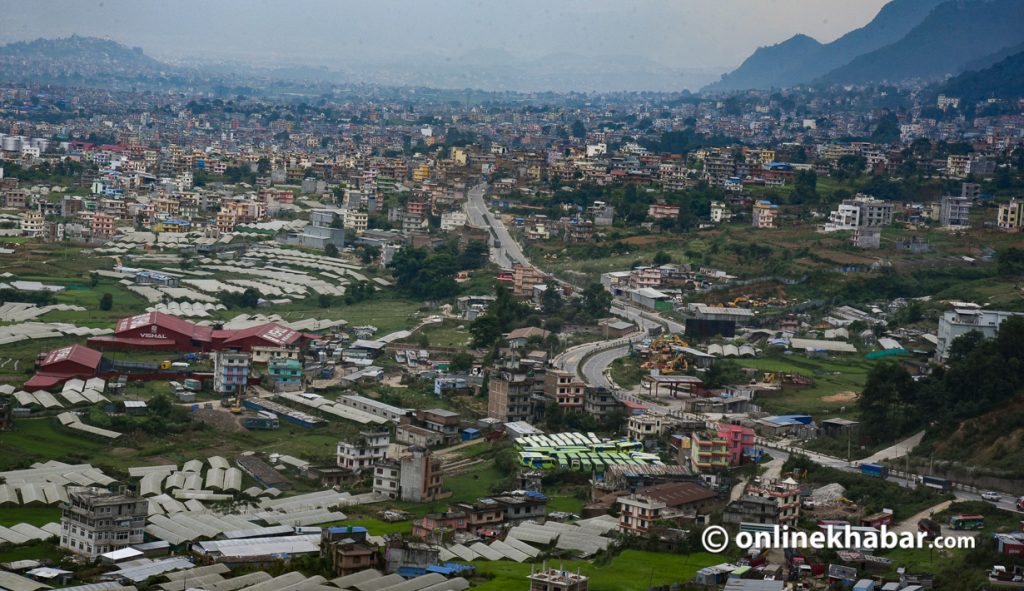
However, in a developing country like Nepal, implementing this is not possible, argues Shakya. “Only those who have enough money can follow green architecture. Green architecture is not as durable as cement. So, it is not possible to go into this concept immediately.”
Engineer Sangraula disagrees, “Following green architecture is not easily possible in a country like ours mainly due to the indifference to nature, the lack of skilled human resources and the lack of promotion of this concept. The notion that it can be built by only those who have a lot of money is wrong. It can be built sustainably at a reasonable price.”
As green architecture is a broad subject in itself, its strategies include ‘layout’ of building design, building orientation, insulation between building materials, window ceiling design, tree planting, waste management, and rainwater harvesting also, according to him.
Challenges in adopting green architecture
Adopting the concept of green architecture is very challenging, views Parajuli. He says, “Such a new concept is driven by economic conditions. If it is not economically viable and self-sustaining, no one wants to follow it. Incentives are needed to follow it.”
Engineer Sangraula also admits, “Consumers are aware of the pros and cons of cement, which has a history of more than 200 years. But, even if some customers come looking for eco-friendly home design, as a brand new concept, it is difficult to convince the customer. They don’t try to take any risks.”
However, Sangraula seems confident that green architecture will be implemented in the future, even if it takes time.
Khadka, associated with Engineers Post, prepared this story as a part of the Climate Change Reporting in the Himalayan Region Fellowship offered by The Energy and Resources Institute, India.



